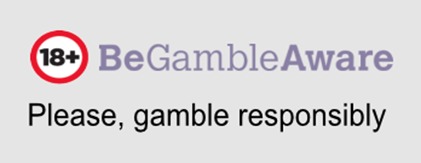

What is edge-sorting and why it cost Phil Ivey a million-dollar prize?

Edge-sorting is the recognition of cards when
they are face down, and there is heated debate on the internet as to whether it
is a legitimate technique for winning or whether it is a cheat used by professional
players to accumulate million-dollar prizes.
Phil Ivey is a clear example of how edge sorting in poker card games is not recommended. Despite the controversy, it has cost Phil Ivey a million-dollar prize in Blackjack and baccarat games. But what does this technique really consist of?
What is edge sorting in poker?

Edge sorting is a technique that involves
sorting the edges of cards in order to memorizes their value and provide extra
information during a game. Edge sorting is a technique that requires a lot
of concentration and a great capacity for analysis and study, as it
requires studying the edges of the cards and memorizing the back of the card in
order to act accordingly during the games. Knowing the value of a card covered
by its edge, you can bet or stand with a maximum probability of success.
In order to be able to use edge sorting with
poker cards, the deck has to meet a number of requirements. First of all, the
cut patterns of the cards must not be identical. If all the backs are
exactly the same, edge sorting is not feasible because there is no way to
catalogue the cards. Wrinkles, marks or folds on their surface could be used to
recognize them, but these imperfections usually cause the decks to be replaced,
making card cataloguing impossible.
For edge sorting to be effective, the order of
the poker cards used must be taken into account. Therefore, in games such as
Blackjack it is easier to apply this technique, where flipped cards are
constantly placed on the table.
If the cards are turned over, turned sideways
or placed with their corners facing in opposite directions, sorting becomes
impossible. This is why it is a technique that does not work in other games.
And, if you turn (cut the deck in two and flip one side), edge sorting
is virtually impossible.
It was Phil Ivey's case that brought this technique into the spotlight. For edge sorting to work, the person at the table in charge of checking that no cheating or trickery is taking place must be unaware of the existence of this technique, something that is difficult to do nowadays, given the repercussions of the case.
Is edge sorting legal?
Much has been said about whether memorizing the
poker values reflected in the cards by studying the edges of the cards was a
cheat or a highly sophisticated method of winning, requiring skill and a
great deal of memory and concentration.
Although it is undeniable that it requires a high level of skill to be able to associate the values of cards by their edges, today the issue of edge sorting is clearer. The penalties for edge sorting apply to both manufacturers and players, so it is considered an inappropriate way to win. However, edge sorting is not illegal, so it cannot be classified as such.
What does it take to learn how to edge sort

As we said, learning edge sorting requires high
memorization skills, concentration and a predisposition almost like a
photographic memory. Because the player who performs this technique looks at
very subtle aspects of the cards and memorizes the value of each one throughout
the games.
Given that the size of a poker card is identical
to the rest of the cards in the deck, the only way to sort the cards when they
are turned over is to look at the edges and the cut of the pattern.
However, considering that there are over half a
hundred cards in a deck of traditional poker cards, concentration must be at a
maximum, and consistency in playing the same deck from round to round
must be the same.
Exactly how many cards are in a deck of poker
cards? There are 52 cards in a classic deck, and for edge sorting
to be effective it is important that the same type of deck is used every time.
If you don't, you will have to start sorting the cards all over again and all
the work you have done up to that point will be for nothing.
You may also like

"SonOfRichDad" Wins $1M Bounty at GGPoker
"SonOfRichDad" Takes Down GGPoker's 1st Million Dollar Bounty!In October 2022, GGPoker introduced the Bounty Jackpot in its popular Progressive Knockout (PKO) tournaments. The 'Bounty Jackpot' sees...

Self-stacked scripts in poker: what are they and what are they for?
With the growth of online poker, digital resources have been increasing, helping to simplify the role of the player both during the game and in the moments before and after. In this post we are goi...

Benjamin "Bencb" Rolle, the new CoinPoker ambassador
Benjamin "Bencb" Rolle, the new CoinPoker ambassadorCoinPoker makes a stellar additionRenowned German player and coach Benjamin “Bencb” Rolle has officially joined the platform as its ambassador. R...













